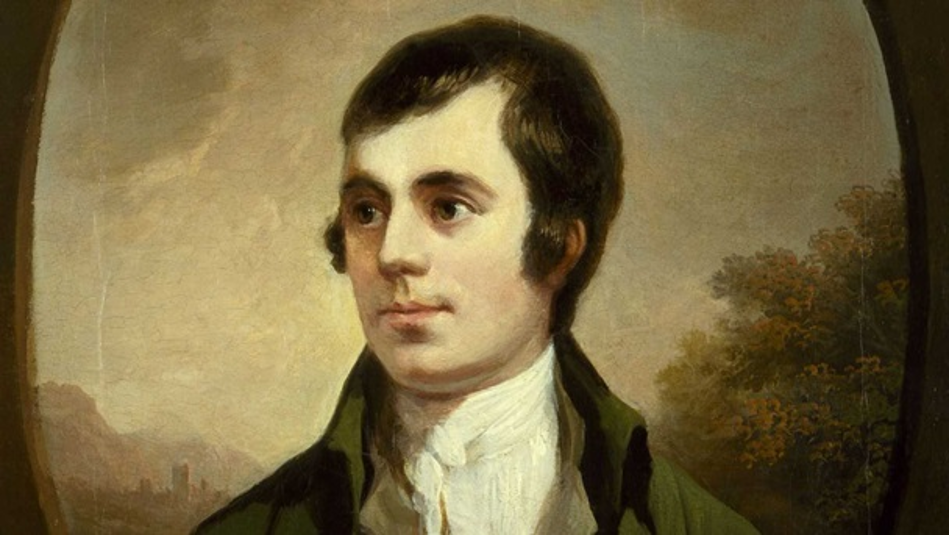Burns Night is annually celebrated in Scotland (and the world) on January 25th. It commemorates the life of the bard (poet) Robert Burns, who was born on January 25, 1759. Burns (25 January 1759 – 21 July 1796), also known as Rabbie Burns, the National Bard, Bard of Ayrshire and the Ploughman Poet and various other names and epithets, was a Scottish poet and lyricist. He is widely regarded as the national poet of Scotland celebrated worldwide. But to me this title should belong to SIR WALTER SCOTT. Rabbie is the best known of the poets who have written in the Scots language, although much of his writing is also in English and a light Scots dialect, accessible to an audience beyond Scotland. To be honest, most of his writing I cannee understand! As well as making original compositions, Burns also collected folk songs from across Scotland, often revising or adapting them. His poem (did he write it?) “Auld Lang Syne” is often sung at Hogmanay (the last day of the year), and “Scots Wha Hae” served for a long time as an unofficial national anthem of the country. Burns was born two miles south of the town of Ayr, in Alloway, the eldest of the seven children of William Burnes (1721–1784), a self-educated tenant farmer from Dunnottar in the Mearns and Agnes Broun (1732–1820), the daughter of a Kirkoswald tenant farmer. His dad built the house (now the Burns Cottage Museum), where he lived until Easter 1766, when he was seven years old. William Burnes sold the house and took the tenancy of the 70-acre Mount Oliphant farm, southeast of Alloway. Here Burns grew up in poverty and hardship, and the severe manual labour of the farm left its traces in a premature stoop and a weakened constitution. He had little schooling and got much of his education from his father, who taught his children reading, writing, arithmetic (strangely named the “3 R’s”), geography and history. Hw wrote for them A Manual of Christian Belief. He was also taught by John Murdoch (1747–1824), who opened an “adventure school” in Alloway in 1763 and taught Latin, French, and mathematics to both Robert and his brother Gilbert from 1765 to 1768. After a few years of home education, Burns was sent to Dalrymple Parish School in mid-1772 before returning at harvest time to full-time farm labouring until 1773, when he was sent to lodge with Murdoch for three weeks to study grammar, French, and Latin.
His first child, Elizabeth “Bess” Burns (1785–1817), was born to his mother’s servant, Elizabeth Paton (1760–circa 1799), while he was embarking on a relationship with Jean Armour, who became pregnant with twins in March 1786. Burns signed a paper attesting his marriage to Jean. To avoid disgrace, her parents sent her to live with her uncle in Paisley near Glasgow. Although Armour’s father initially forbade it, they were eventually married in 1788. Armour bore him nine children, only three of whom survived. Burns then fell in love with Mary Campbell (1763–1786) which started his downfall. She lived in Campbeltown before moving to work in Ayrshire. He dedicated the poems “The Highland Lassie O”, “Highland Mary”and “To Mary in Heaven” to her. Mary Campbell left her work in Ayrshire, went to the seaport of Greenock, and sailed home to her parents in Campbeltown. In October 1786, Mary and her father sailed from Campbeltown to visit her brother in Greenock. Her brother fell ill with typhus, which she also caught while nursing him. She died of typhus in October 1786 and was buried there. Nae mention here of Burns! His various, ill-fated ventures as a farmer had left Burns totally disillusioned with working on the land so, just before his 29th birthday, he decided to put his education to better use by seeking a steady, well-paid job as an exciseman, (or gauger). An exciseman was employed by the government in what today would be HM Customs and Excise to ensure that people paid their taxes, particularly where related to alcohol. It was not a “trade” that was admired by the common people and it would be fare to say that excise men at this time were, to say the least, unpopular and that attitudes towards them were, shall we say, ambivalent.
On the morning of 21 July 1796, Burns died in Dumfries, at the age of 37. The funeral took place on Monday 25 July 1796, the day that his son Maxwell was born. He was at first buried in the far corner of St. Michael’s Churchyard in Dumfries; a simple “slab of freestone” was erected by Jean Armour. His body was eventually moved to its’ final location in the same cemetery, the Burns Mausoleum, in September 1817. The body of his widow Jean Armour was buried with his in 1834. Through his twelve children, Burns has over 900 living descendants as of 2019.
The best thing he ever wrote – in my mind; Such A Parcel Of Rogues In A Nation 1791
Fareweel to a’ our Scottish fame, Fareweel our ancient glory; Fareweel ev’n to the Scottish name, Sae fam’d in martial story. Now Sark rins over Solway sands, An’ Tweed rins to the ocean, To mark where England’s province stands- Such a parcel of rogues in a nation!
What force or guile could not subdue, Thro’ many warlike ages, Is wrought now by a coward few, For hireling traitor’s wages. The English stell we could disdain, Secure in valour’s station; But English gold has been our bane– Such a parcel of rogues in a nation!
O would, or I had seen the day That Treason thus could sell us, My auld grey head had lien in clay, Wi’ Bruce and loyal Wallace! But pith and power, till my last hour, I’ll mak this declaration; We’re bought and sold for English gold– Such a parcel of rogues in a nation!
I’ll give him that one, a poem about the Scottish lords selling out to the English for gold, if you can find it, listen to the Dubliners sing this. PAUL MCLEAN

